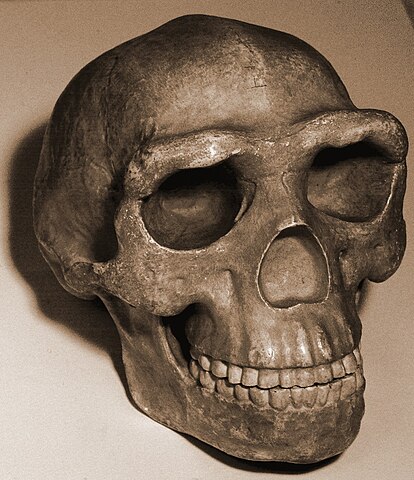The evolution of the genus Homo, which includes modern humans (Homo sapiens) and their closest relatives, is a complex and fascinating journey spanning millions of years. Here’s an overview of the key stages in the evolution of Homo, tracing the origins of our human ancestors:
1. Homo habilis (2.8 to 1.5 million years ago):
- Tool Use: Homo habilis, meaning “handy man,” is known for its association with the Oldowan tool industry, representing the earliest evidence of stone tool use. This innovation likely played a crucial role in their adaptation and survival.
2. Homo erectus (1.9 million to 143,000 years ago):
- Migration Out of Africa: Homo erectus is credited with being the first hominin species to migrate out of Africa and spread to regions such as Asia and Europe. This widespread distribution is supported by fossil evidence from sites like Dmanisi in Georgia.

- Acheulean Tools: Homo erectus is associated with the Acheulean tool industry, characterized by handaxes and cleavers. This technology represents an advancement from the earlier Oldowan tools.
3. Archaic Homo sapiens (500,000 to 200,000 years ago):
- Diversity: Archaic Homo sapiens represents a diverse group of hominins with features intermediate between Homo erectus and modern humans. Fossil evidence from sites like Sima de los Huesos in Spain and Jebel Irhoud in Morocco provides insights into their anatomy.
4. Neanderthals (400,000 to 40,000 years ago):
- Adaptation to Cold Environments: Neanderthals (Homo neanderthalensis) adapted to Ice Age conditions in Europe and parts of Asia. Their robust physique, large brains, and use of tools are notable features.
- Cultural Complexity: Neanderthals demonstrated cultural complexity, including the creation of Mousterian tools, evidence of burial practices, and symbolic behavior as seen in the use of pigments.
5. Homo sapiens (200,000 years ago to present):
- Emergence in Africa: Homo sapiens originated in Africa around 200,000 years ago. Fossil evidence from sites like Jebel Irhoud and Herto provides insights into the earliest members of our species.
- Behavioral Innovations: Homo sapiens exhibited a range of behavioral innovations, including more sophisticated tools (Upper Paleolithic technologies), art, symbolic expression, and complex social structures.
- Global Dispersal: Homo sapiens gradually migrated out of Africa, reaching different parts of the world. This process is associated with significant cultural and technological developments.
6. Denisovans (Approximately 200,000 to 30,000 years ago):
- Genetic Discoveries: Denisovans are known primarily from genetic evidence extracted from a finger bone found in the Denisova Cave in Siberia. They interbred with both Neanderthals and Homo sapiens, leaving traces of their DNA in modern human populations.
7. Homo floresiensis (Approximately 100,000 to 60,000 years ago):
- “Hobbit” Fossils: Homo floresiensis, nicknamed the “Hobbit,” was discovered on the Indonesian island of Flores. Its small size and unique features raise questions about its evolutionary origins and the diversity of hominins in Southeast Asia.
8. Ongoing Research and Discoveries:
- Continued Excavations: Ongoing excavations and discoveries, fueled by advancements in technology, continue to contribute to our understanding of the evolutionary history of the genus Homo.
The evolution of Homo is marked by adaptability, technological innovation, and the ability to inhabit diverse environments. Ongoing research, combining fossil evidence, genetic studies, and archaeological findings, further refines our understanding of the intricate journey that led to the emergence of modern humans.











